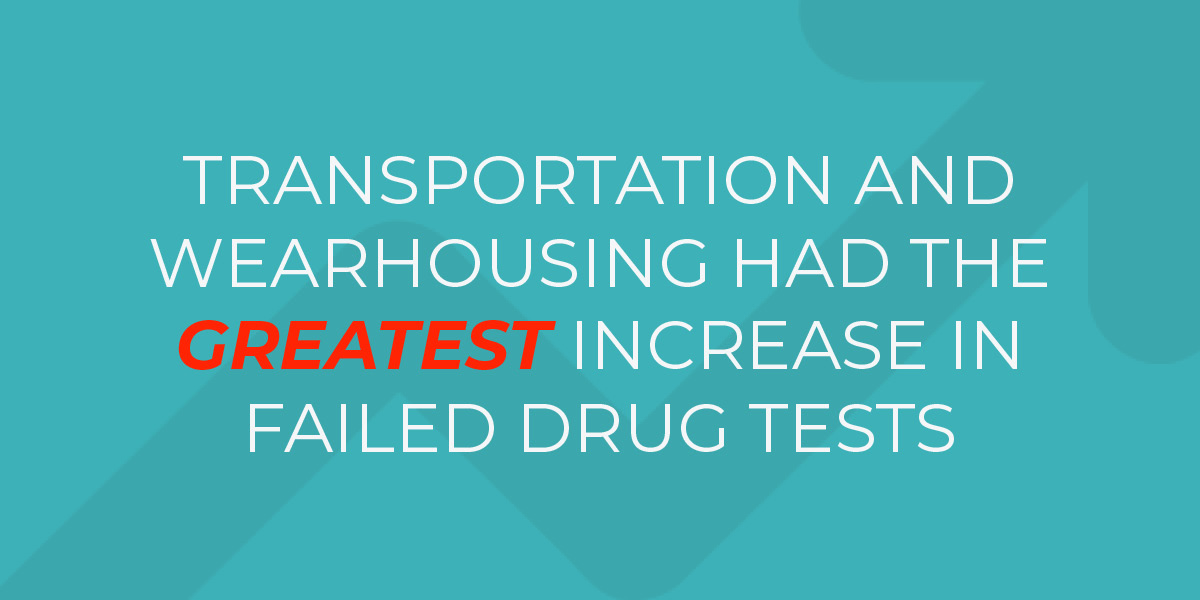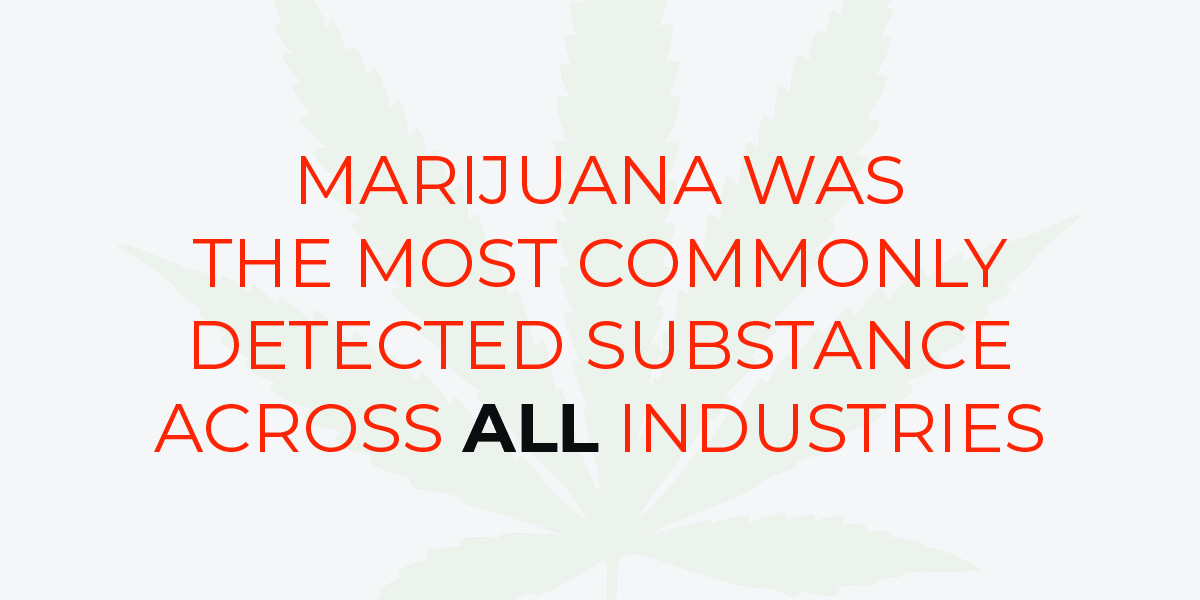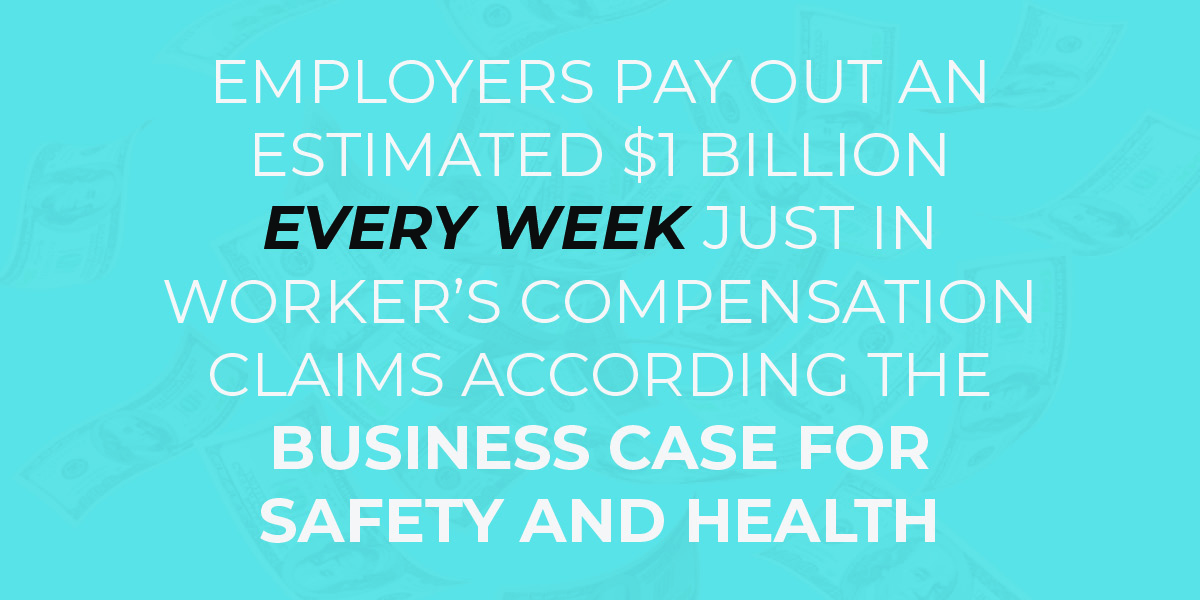What’s the real secret to achieving a healthy and safe work culture, week after week, and month after month?
That there isn’t a secret at all.
To achieve a strong and healthy work culture, it’s directly dependent on the occupational health resources you have in place to both help prevent injury, and keep employees safe on the job after the injury occurs.
In this article, we’re going to dive deep into the role occupational health plays – and how it impacts your organization the hardest. To reduce the severity of injury, to minimize claims cost and improve productivity, is dependent on the prevention of workplace hazards that can otherwise hinder the health of your company and its workers.
How do you create a sustainable safety culture?
Let’s dive in and find out!
What is Occupational Health?
Occupational health encompasses all aspects of safety and health, with a strong focus on prevention of hazards. Employees that are healthy and physically capable to do their job experience lower injury rates, higher production and an overall increase in morale. How can employers achieve a healthier and more competent workforce? With an occupational health program that encompasses all aspects of employee health from pre-hire through end of service and beyond.
Axiom Medical views this as the Employee Health Journey.
Occupational health can include:
- Drug/Alcohol (DOT & NON-DOT)
- Hearing Conservation
- Respiratory Fit & Protection
- HAZWOPER
- Pulmonary Function
- Absence Management
- Return to Work
- Medication Reviews
- Exams: Pre-Employment, Annual, DOT
- Wellness Programs
“Individual commitment to a group effort–that is what makes a team work, a company work, a society work, a civilization work.” –Vince Lombardi
The Greatest Risks of Injury (Per Industry)
Do you know what type of injury remains your greatest threat?
According to Injury Facts 2016, overexertion injuries make up 35% of all work-related injuries and remain the largest contributor to workers’ compensation costs.
The top five injuries as a percentage of total claims were:
- Strains and sprains (30%)
- Cuts or punctures (19%)
- Contusions (12%)
- Inflammation (5%)
- Fractures (5%)
It’s not just overexertion that causes injury. Recent studies show substance abuse is also on the rise.
Here’s what we know, and what we can do to manage that risk.
According to Quest Diagnostics, the rate of positive drug tests rose by double digits in 5 of 16 major workforce industries from 2015-2017. Examining more than 10 million urine tests conducted over the last 3 years showed that:
- Transportation and warehousing had the greatest increase in failed drug tests
- Marijuana was the most commonly detected substance across all industries
- Construction alone had the greatest rise in methamphetamine positivity, steadily climbing each year, and;
- Cocaine detection continued to increase. The biggest industries that were affected include: waste management, transportation and warehousing.
Drug testing has always been an important preventative tool to maintain a healthy workforce, but given the industry trends, it’s now an essential one. Without it, the rate of injuries will continue to rise, and both the direct and indirect costs of maintaining your bottom line becomes a complex undertaking.
The U.S. Department of Labor has reported that “drug and alcohol abuse in the workplace causes 65 percent of on-the-job accidents and that 38 percent to 50 percent of all workers’ compensation claims are related to the abuse of alcohol or drugs in workplace.”
An employee drug testing program that offers pre-employment, post-incident, random and reasonable suspicion testing on demand is the key to minimizing your risk. Control the safety of your workforce by proactively testing and holding them accountable.
How confident are you that your internal resource never misses a required employee exam?
Outsourcing an occupational health program can offer many benefits, ensuring employees receive ongoing and periodic testing to ensure they remain fit and healthy to do the job they were hired to do:
- Pre-Employment Testing. We provide customized testing that will not only keep your employees safe and fit to do their job, but keep you compliant! Testing includes (but isn’t limited to): drug/alcohol, background checks and functional capacity evaluations.
- On-Demand Periodic/Random Testing
- Absence Management
- Post-Employment Testing
Here’s why it matters:
Five years ago, Axiom coordinated a routine DOT exam for Lou, a truck driver of 15 years, and what it revealed changed his life forever.
While a clinic initially recommended a two year DOT card be issued for Lou, Axiom always reviews lab results with a fine-toothed comb.
Lou’s results indicated he was likely developing Congestive Heart Failure — a condition in which the heart’s function as a pump is inadequate to meet the body’s needs.
After contacting Lou, he followed up with his personal doctor and was diagnosed with the condition.
Had his condition continued to go unnoticed (Lou didn’t recognize early symptoms), he could have had a health emergency while driving — ultimately taking him away from his pride and joy — his 11 grandchildren.
While many businesses chose to use an internal resource such as an HR manager to take on the role of coordinating and scheduling exams and reviewing for accuracy, will this lead to an efficiently run organization that can effectively dot all their I’s and cross all their t’s?
Often times, it won’t.
Statistics show that on average, clinics have an 15-25% error rate in reporting results, billing and employee data.
This can frequently lead to errors and ultimately produce a greater risk of not remaining compliant.
Outsourcing an occupational health program for your drug testing, respiratory, hearing conservation or industry-specific testing needs (such as asbestos or silica) can provide long lasting benefits.
Why is Employee Injury So Expensive to Manage?
The direct costs of a workers’ comp claim can hit an organization hard.
Did you know that the average cost for a single employee injury is $7,500?
Medical costs can quickly add up, but it’s the unforeseen indirect costs that can turn one employee’s injury fees into the thousands. In fact, in many instances, the indirect costs far outweigh the direct costs!
Some examples of common indirect costs include:
- Legal fees
- OSHA fines
- Accommodation costs
- Productivity loss
- Investigation costs, including work site shutdown
- Hiring and training new hires
- Damaged tools/machinery
Left to a company’s own devices to monitor and manage an employee’s injury and recovery can be a daunting process; even more so as the indirect costs skyrockets.
No matter how safe of an environment we provide workers, it’s inevitable: injuries will take place.
Since we can’t stop injuries from taking place altogether, we can minimize those costs. So, the real question is: when it does take place, how much is it going to cost you?
Building a safer and sustainable work culture isn’t just about preventative measures in place – it’s also about ongoing, and effective leadership.
Let’s take a look as to why safety must be modeled from the top, as well as some ways to start a safety dialogue with your employees.
Employees as Their ‘Safest Self’ – What Works?
What brings about a sustainable difference in injury outcome?
By approaching your employees as people, not as a number.
For example, let’s take a company that has 10,000 employees nationwide.
The safety manager has all of his ducks in a row: their safety policy is concise, expectations are clearly communicated, toolbox talks occur once a month and the safety program is in place. With such a safe environment, why isn’t their overall rate of injury going down?
Because their safety program only exists on paper but there’s little engagement with the people. As a result, the management’s commitment to safety doesn’t translate to its workers.
With the motivation piece missing, employees don’t take action.
According to the SAFE Dialogue technique, employers need face time in order to engage with their employees.
SAFE stands for:
- Summarize
- Anticipate
- Foresee
- Evaluate
Here’s an example of how to spark engagement with your employees, one question at a time:
- Summarize the most important steps of your job. “What are your tasks for today?”
- Anticipate where your pitfalls are. “Where do you find yourself most commonly having a ‘near miss’, or altogether making a mistake?”
- Foresee their worst-case scenarios. “Can you pinpoint the worst thing you can potentially see happening?” or “What are some possibilities for error here?”
- Evaluate your control. “In what ways can you prevent it from occurring? How can you minimize its risk?”
The SAFE technique creates an opportunity to engage and connect with your employees – the perfect jumping off place for workers to participate and actively become part of the solution.
“Before anything else, preparation is the key to success.” – Alexander Graham Bell
Strategic Safety in Numbers: Let’s Do What Works!
Keynote Speaker and Leadership Trainer Denis Baker says, “As leaders, we are in a position to serve others. It’s crucial we keep our focus on others. If we don’t, leadership can destroy our performance. When we become focused on performance, we begin looking for accolades and lose our focus on what leadership is all about. One must remember our role as leaders is to serve others by helping them succeed.”
The more successful our employees become, the more successful the organization becomes. Employers can accomplish this by increasing their visibility in the following ways:
- Showing support.
- Crafting relevant toolbox talks, according to season, industry, demographics, trending injuries, etc.
- Make yourself visible. Show up for some face-to-face time with your employees.
- Hold yourself accountable, and take ownership over your own safety practices – using it as a lesson to teach others.
- Lean on the support of an occupational health program. Employment testing such as periodic drug/alcohol, hearing conservation and functional capacity evaluations throughout the employee life cycle can make a significant impact.
How do you keep employees safe, and minimize the injury outcome when it does occur? By effective, engaging leadership! Whether that means holding safety meetings more often, or applying the SAFE dialogue technique, everyone wins: the individual employee, the entire team as a whole and the organization at large.
Where Are Your Employees Most at Risk?
What does a ‘wrong worker’ mean?
The WRONG worker is anyone who is unable to perform essential job functions that’s required.
It can also be someone who can do the job but is at a high risk of injury from repetitive motion or job functions that their role requires of them.
If you were considering buying a used car, would you base you decision on the outward appearance of the vehicle or take the owner at their word that the car was in good condition?
Of course not!
You’d test drive the vehicle, inspect it, and even go the extra mile to have it looked over by a mechanic to ensure everything was operating.
When it comes to new employees, the same rule applies!
The key to checking each candidate before they’re hired is to make sure they can do the job you hire them to do!
Case Study: Your Secret Weapon to Hiring the Right Workers
This client was experiencing an employee population that was facing health issues and could not complete their job duties on a regular basis. They were experiencing a high frequency of injuries and additional time taken off for medical reasons. The high number of qualified individuals that were applying became a top concern: who was right for the job?
Axiom’s Occupational Health Programs ensured the new applicants were not only qualified as a great hire, but that they were able to physically handle the duties required. In the first quarter of testing, approximately 20% of the applicants were found to be incapable of passing a Functional Capacity Exam and/or Pre-employment Physical. They quickly realized that their new hire population would experience a lower injury frequency, a higher level of productivity, and less time off work.
Effective Leadership = Motivated Employees
Being a great leader isn’t really about you—it’s about your employees.
In order to motivate the masses, you’ve got to set an example for everyone to follow—and that really means keeping your employees happy and healthy at work. Here are three powerful ways to motivate your employees to up their game so you can boost your bottom line.
“Cooperation is the thorough conviction that nobody can get there unless everybody gets there.” – Virginia Burden
1: Accept You Won’t Always Perform Perfectly
As a manager, you know that you can’t (and you won’t) always perform perfectly. Maybe your presentation didn’t hit it out of the park like you expected it would.
Maybe you had a higher number of reportable injuries than you expected.
Maybe you didn’t meet your objectives for last quarter like you thought you would.
No matter what challenges you’re facing, a successful leader continues to hit the ground running, learn from mistakes swiftly, and change course when needed to improve their outcome.
Leadership Lesson: One trait all leaders possess is the understanding that growth can’t happen when you feel like you have all the answers.
There’s no shame in the ‘imperfection’ game.
Reflect on your actions (and those of your employees’) that didn’t give you the outcome you wanted, and try another route to success next time.
“Leadership and learning are indispensable to each other.” – John F. Kennedy
2: Maintain a Good Work/Life Balance
From time to time, everyone experiences burnout. But, the most successful leaders initiate a preventative wellness plan to minimize it.
According to a Harvard Business School Survey, the compounding stress from the never-ending workday is damaging. It can hurt relationships, health and overall happiness. Improving your turnover rate and employee efficiency means giving your workers the opportunity to improve their health, boost their productivity and maintain a greater work/life balance.
Leadership Lesson: Set your employees up for success by encouraging them to unplug from their tech devices when they’re off the clock. Discourage late night emails or text messages so that work can end when they’re with their loved ones.
By eliminating late night emailing or text messaging, you will help them develop a stronger habit of resilience.
“Resilient people feel a greater sense of control over their lives—and that sense of control leads to less stress professionally and personally,” says Robert Brooks, professor of psychology at Harvard Medical School.
3: Be Emotionally Intelligent Towards Your Workforce
Many people realize that leadership requires vision, great ideas, being a solid role model and humility. But, emotional intelligence? Many good leaders never become great ones because they fail to develop solid interpersonal relationships.
Leadership Lesson: While using your head in business to get ahead, don’t forget to have a heart by being the kind of leader that communicates an investment in your employee’s health and well-being!
“Our attitude determines how we interact with others and the way we communicate determines our influence. Safety professionals have daily interactions with all levels of the organization. If we approach an employee with a bad attitude, the outcome tends to be riddled with talk of discipline, loss of job and discouragement. On the other hand, a right or positive attitude can motivate an employee to recognize their at-risk behaviors and identify what needs to change to ensure they stay safe.” – Denis Baker
The Value of Outsourcing an Occupational Health Program
The pathway to employee health isn’t straight and narrow, but ever-changing with dips and detours. Axiom Medical provides a comprehensive occupational health program fit for all of your organization’s needs from pre-employment (so you hire the most qualified applicants), to intra-employment (to cover both ongoing/on-demand and industry-specific testing) to exit testing.
This includes, but isn’t limited to:
- Drug/Alcohol (DOT & NON-DOT)
- Hearing Conservation
- Respiratory Fit & Protection
- HAZWOPER
- Pulmonary Function
- Absence Management
- Return to Work
- Medication Reviews
- Vaccinations
- Exams: Pre-Employment, Annual, DOT
Give us a call at 877-502-9466 to learn how streamlined our occupational health solution really is!

Heather lives and writes by the motto, “No coffee, no workee,” and is passionate about helping others live a happier and healthier life. When she’s not writing away, you can find her playing basketball with her two sons, planning her next getaway “somewhere tropical” or trying out a new recipe with chocolate as the main ingredient.
Find out more about our Injury Case Management services or our Occupational Health Programs.













